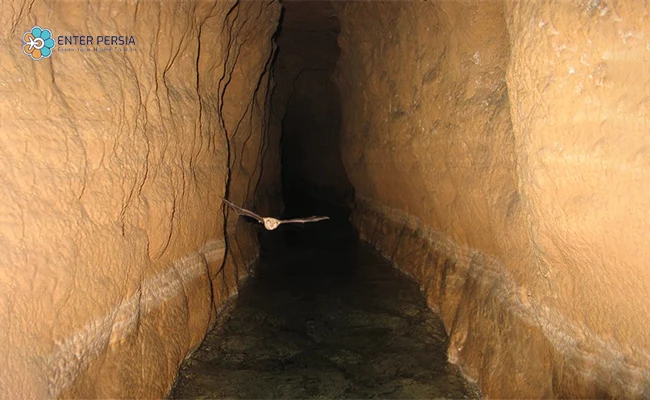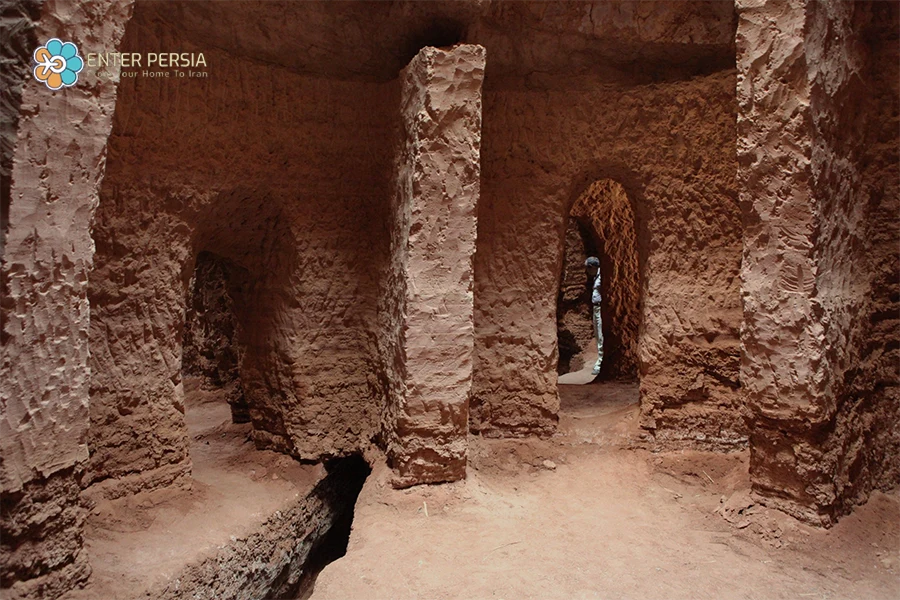Persian qanats form part of the country’s tourist attractions. Thousands of years ago, the qanat was created by the Iranians for the first time as a solution to deal with dehydration. This simple but functional structure is a sign of Iranian’s intelligence and efforts to improve living conditions. There are about 40,000 qanats in Iran, which are of great historical value, and so far 11 of them have been registered as UNESCO World Heritage. Stay with Enterpersia until the end of this article to learn about the mechanism and importance of qanats.
Meaning of Qanat
Qanat or “Kariz” means canal and waterway. Qanats are underground structures that are used to collect water and direct it to the surface of the earth. At first, qanats were common in the mountainous regions of Central Asia and the Caucasus region. Kariz is a Persian word and was originally “Kahrez”. The word qanat itself is Arabicized from the Persian qanat, which is derived from the root of the verb “Kandan” (digging) or channel.
Qanat System Definition
Persian qanats System are a set of several wells that are connected to each other by a channel. This channel reaches the surface of the earth at the end of its path, and water reaches its surface from the depth of the soil.
The Persian qanat consists of a mother well, several wells called access shaft, a channel called qanat channel, and an opening or water outlet. The water outlet is called “Mazhar” of the Qanat. The end of the qanat is also called the “Pishkar” of the qanat. Also, the dry and waterless parts are called “Khoshke Kar” and the parts with water are called “Abdeh”.
The Oldest Qanat in the World

Among the Persian qanats, one should look for the world’s oldest qanat in Razavi Khorasan province. Qasabeh qanat or Karez of Gonabad is more than 2500 years old and has the title of the oldest Persian qanat in the world. Its length is 33 km and it consists of two main streams named Qasabeh and Doulab. It has a total of 427 wells, and its mother well is 350 meters deep, and its water flow is about 150 liters per second, which is almost constant throughout the year. This qanat is still active and is the only water supplier of Gonabad.
The Longest Qanat in the World
The longest qanat in Iran is the “Zarch” qanat in Yazd city, which is 100 kilometers long, the number of wells is 2115, and it is built at a depth of 23 meters. The age of this pesian qanat is estimated to be three thousand years in the Zoroastrian period. This qanat is located next to Yazd Jame Mosque. The Zarch qanat has remained resistant to the sharp drop in the underground water level and modern technology, and for this reason, it is one of the oldest masterpieces of human civilization in the irrigation and water supply of Yazd city.
Iran’s Most Special Qanat
“Moon” qanat, which is located in Ardestan city, Isfahan province, is the only two-level qanat in the world, which surprisingly, the water from one of its floors does not penetrate into the other. This 2,500-year-old Persian qanat houses a water storage dam and is able to store agricultural water for four months. Having the appropriate and necessary slope in both floors of the qanat and the placement of the ten water floors above, has caused the water flow in it to be continuous. Experts have called this qanat one of the masterpieces of engineering science in ancient times in terms of observing the principles of excavation.
Final word
Visiting the qanats is one of the amazing attractions of Iran tour.Fortunately, many qanats are still intact. By visiting the qanats, you can realize the greatness and intelligence of the ancient people of Iran and be amazed. Please do not damage their structure while visiting these historical works that play an important role in the ecosystem.



Wow, wonderful blog format! How lengthy have you been blogging for?
you make running a blog glance easy. The whole look of your website is excellent, as
well as the content! You can see similar here ecommerce